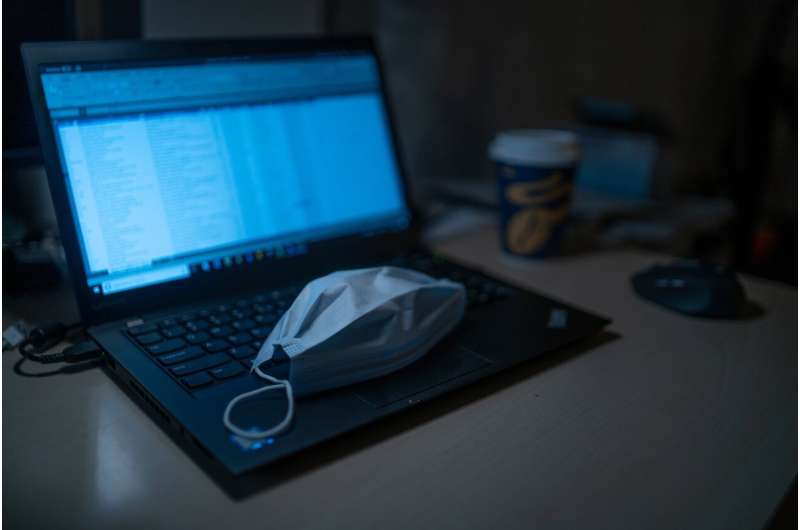Automated texting system saved lives weekly during first COVID surge

A life was saved twice a week by an automated text messaging system during the fraught early days of the COVID-19 pandemic and, overall, the patients who enrolled in that system were 68 percent less likely to die than those not using it. These insights about Penn Medicine’s COVID Watch—a system designed to monitor COVID-19 outpatients using automated texts and then escalate those with concerning conditions to a small team of health care providers—were published today in the Annals of Internal Medicine.
“At the beginning of the pandemic, we instinctually thought patients needed extra support at home, even if they weren’t sick enough or ill yet. And if they were to get very sick, we wanted to help them get to the emergency department earlier, so COVID Watch was our solution,” said a co-primary investigator of the study, Krisda Chaiyachati, MD, the medical director of Penn Medicine OnDemand and an assistant professor of Medicine. “Our evaluation found that a small team of five or six nurses staffing the program during some of the most hectic days of the pandemic directly saved a life every three to four days.”
COVID Watch was built on Penn’s “Way to Health” platform, accelerating its development from concept to deployment. Conceived March 11, 2020, COVID Watch enrolled its first patient March 23, 2020, only two weeks after Penn Medicine took in its first COVID-19 patient. Designed to help patients with the virus recover safely at home and keep hospital capacity available, the system uses algorithmically guided text message conversations with patients to assess their conditions. Twice a day, it sent routine questions to patients, such as “How are you feeling compared to 12 hours ago?” and “Is it harder than usual for you to breathe?” If a patient indicated a worsening condition, follow-up questions were asked and they were elevated to the human members of a centralized team—headed by co-author Nancy Mannion, DNP, COVID Watch’s nurse manager—who would call to check in and recommend hospitalization, if needed.
Nearly 20,000 patients have been enrolled in COVID Watch since it started.
“We did an early analysis of the system and determined that we could safely monitor more than 1,000 patients simultaneously, 24/7, with a small, well-trained team of registered nurses,” said Anna Morgan, MD, COVID Watch’s medical director and an assistant professor of Internal Medicine. “On top of that, those same nurses could often also take care of other COVID-related tasks such as helping patients arrange COVID testing and discussing their results, which is important during surges.”
To further assess COVID Watch’s effect on patients, researchers from the Perelman School of Medicine at the University of Pennsylvania analyzed data from every adult who received outpatient care from Penn Medicine, starting the day COVID Watch launched until Nov. 30, 2020, a period of roughly eight months. They separated the data into those enrolled in COVID Watch and those who received the typical course of outpatient care: 3,448 patients enrolled in COVID Watch and 4,337 not in it. The analysis accounted for patients’ ages, underlying conditions, and other risks for developing severe disease.
Only three out of 3,448 patients in COVID Watch died within 30 days of their enrollment, compared to 12 of the 4,337 otherwise equivalent patients outside of the program. That meant the mortality rate outside of COVID Watch was three times higher. At 60 days after enrollment, five people within COVID Watch died compared to 16 not using the system.
This data translated to a 68 percent reduction in the chance of dying if a patient was enrolled in COVID Watch. Additionally, COVID Watch was credited with saving 1.8 lives per 1,000 patients at 30 days, and 2.5 per 1,000 at 60 days.
The study’s lead author and co-primary investigator, M. Kit Delgado, MD, an assistant professor of Emergency Medicine and Epidemiology, as well as the deputy director of the Penn Medicine Nudge Unit, believes that the benefits seen by COVID Watch patients could be explained by: Increased access to and use of telemedicine, and more frequent and earlier trips to the hospital—an average of two days earlier for COVID Watch patients—when symptoms worsened.
Importantly, the study found that COVID Watch was equally accessible and effective for everyone.
“We saw a higher proportion of higher-risk patients and also low-income and Black patients enrolled in COVID Watch, but the fact that we measured a significant benefit associated with enrollment in the program is a good indicator that there truly is a treatment benefit for everyone,” Delgado said. “It’s crucial that we found all major racial and ethnic groups benefited because non-white and low-income communities have had disproportionately higher infection rates, lower access to care, and higher death rates. This implies that this model of care could have reduced disparities in COVID outcomes if it was scaled up more broadly to these communities.”
The COVID Watch team plans to see if the approach, which had originally been built off a system for keeping tabs on chronic obstructive pulmonary disease (COPD) patients, can be applied to helping people with other conditions manage their health at home. They see the nimble, algorithm-driven system as a lasting technology that will factor heavily into care in the coming years.
Source: Read Full Article
